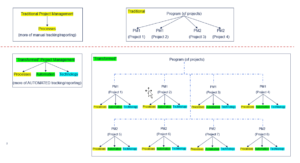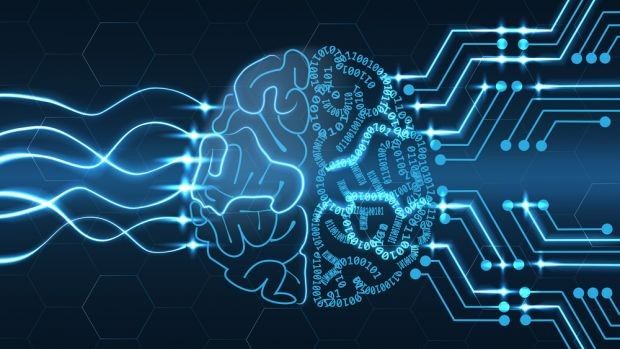The influence of efficient projects, skilled project managers and quality reporting on Digital Transformation
We know the world is moving through a rapid digital transformation phase wherein various organizations, companies, industries, institutions, and governments are transforming their processes, infrastructure, applications, software products, design, testing, customer management, and other elements into a more robust, automatic and sophisticated foundation to keep themselves business and customer-focused, progress faster with cutting-edge technology and march ahead of their competitors in this disruptive and advanced digital transformation journey. While we talk about all these so-called businesses digitally transforming themselves, we are referring to so many changes or advancements that are taking place internally within those businesses under the umbrella of ‘digital transformation’. Each of those advancements mostly starts with a strategic idea in the direction of transformation aimed at long-term growth, gets converted to a requirement, and then moves on to the fast-paced design and implementation depending on the respective domain and industry where the strategic idea is born. If we break this down into smaller pieces, at the end of the day, each implementation of a digital transformation element is eventually a ‘project’. While all these digital transformations are executed ultimately as a project, it is also worth noting that in this process, even projects, project managers, and project reporting are also getting transformed into more innovative, cutting edge and erudite resources or execution processes thereby becoming the most prominent factor and the vital launchpad for the success of multiple digital transformation journeys. This article throws light on the several variations, enrichments, and successful challenges that projects, project managers, and project reporting have been and are going through implicitly while also driving and strongly influencing the successful execution of several digital transformation initiatives in a global and competitive environment.
Talking about projects and project executions, gone are the days when manual copies of project contracts and other documentation were filed and protected throughout the duration of the project. Project processes are now digital, automated, and saving a lot of administrative time. Project creation, assignments, tracking, and monitoring all happen through various automated tools and applications. These management tools are also web or network-based such that these can be accessed and updated by a project manager (PM) irrespective of where the PM is located. Digitalization has revolutionized the project execution processes to be implemented in a completely remote manner without the need for a team to be physically present in one location. Communication channels, stakeholder meetings, project testing, and training are all web-based thereby removing the barriers of physical presence and additional admin time to be invested in projects. These progressions and reserves also indicate and prove that cost saved is cost invested in executing more projects than was the case before – which fundamentally means that with the advent of digitalization and automation, more and more strategic ideas and hence projects will get successfully accomplished at less cost and with more automation and innovative execution techniques. This transformation of projects (at the ground level) is the vigorous and the most effective instrument that plays and will play a key role in the larger picture of implementing scalable digital transformation programs within giant organizations.
Advertisement
[widget id=”custom_html-68″]
The main drivers or the pilots for the progress, execution, and success of digital transformation projects are the so-called “Project Managers” (PM’s). PM’s have themselves automatically transformed over the years and with the dawn of automation, artificial intelligence, and cloud technologies, PM’s have found their competent ways of getting projects executed at a much faster pace without an impact on the quality, timeline, and other relevant execution parameters. In other words, PM’s have become more agile, are using technologies for quicker and effectual monitoring/tracking, and executing more projects in parallel than a year or two ago. Thinking in the grand scheme of things, it would be more apt to say that PM’s are spending less time on individual projects but still delivering them within the boundaries of scope, time, cost, and quality and have also transmogrified themselves into a state where they are executing more projects than before within the same amount of time – which means more transformations (or transformation projects) are actually getting executed at the base level, resource usage is optimized, revenue generation is at its maximum possible thereby putting organizations on a growth trajectory in this intense, disruptive and competitive transformation journey. It is also to be noted that while PM’s in the era of traditional project management were only focusing and executing projects strictly based on a set of quality processes and procedures, PM’s in the digital transformation era are following a combination of “technology-processes-automation” to fast track multiple areas of the project thereby increasing delivery efficiency, decision-making and creating/releasing additional free-time to be utilized on other transformation projects. The combination of automation and technology has been a boon in disguise for the PM’s in recent years due to the fact that these two elements take care of the intelligence that needs to be analyzed in the back end and presenting the most valuable decision making information to the PM’s – thereby saving more time for the PM who otherwise would have to spend a lot of mechanical effort to decrypt the available data and convert it to a form that can be analyzed easily. This in turn also helps the PMs (and hence the organizations) to focus more on the big challenges (farming out the labor-intensive repetitive work to the automated intelligent tools) or the problems hindering the transformation, come up with effective analysis and decisions, and deliver products/value to the customers at a faster pace and with very little time to market.

Figure1: Traditional Vs Transformed Project Execution
One other important element that measures the success of these transformations and the accuracy of mechanisms used for execution the digital transformation is the financial and other reporting that comes out of this “technology-processes-automation” combination being used by PM’s and organizations for digital transformations of all sizes. For any program or a project (large or small), organization always need some kind of a measure to check whether their project (and or investments) is progressing in the right direction and or need some kind of a corrective action(s) to be implemented in case of deviations from the growth path. It is for this reason that PM’s and stakeholders always have a continuous feedback loop based on measurements coming from automated tools. These measurements contain vital information about the various project financial and non-financial reporting which give the stakeholders enough food for thought on what’s causing the current issues (if any) and/or if something is going to cause panic in the future. It is to be noted that though there are a lot of non-financial reporting parameters that could have an impact on the overall progress and hence on decision making; it is also evident that at the end of the day all of these parameters eventually impact the financial numbers associated with the project progress or execution or results. It is not always the profit that the project should aim at but also on the value or the projected return on investment that’s expected from the digital transformation. It is here that the automation/tracking of all the financial information comes in handy and serves as the most important instrument for PM’s and stakeholders to review how and which direction are the transformations going. Organizations are and should make more investments in this space as these metrics and reporting drive the easy decision-making when it comes to actually executing transformation projects. Day by day, it is becoming clear that projects or organizations that are zooming fast through the digital transformation phase have these automated financial tracking tools in place aiding them through each step of the transformation and providing them immense information on how their investment will be yielding them a much-enriched return in the years to come.
In Summary, the three dimensions of projects, project managers and project reporting together with their fast-paced evolutions are a vital ingredient to the progressions of the digital transformation journeys. While success of digital transformation journeys may vary based on domain, technology, and other aspects, it is worth noting that these three elements may form the foundation of most of the transformation journeys when we look at it from a bottom-up approach. A concept without a clear execution path or project, without a central focused leader (PM), and without measurements of the progress could lead it to failure and confusions. To add, it is also evident that in the recent years, these three dimensions have taken leaps and bounds in their specific areas and have embraced “technology-processes-automation” combination to such an extent that any projects or transformations that are built around these dimensions have a higher success rate – due to the fact that these combinations not only have the ability to automatically analyze and report, but they also provide a very high value in enhancing quality decision making which is the key to resolve bottlenecks and spearhead the digital transformation projects onto their completion, success and growth trajectory.




